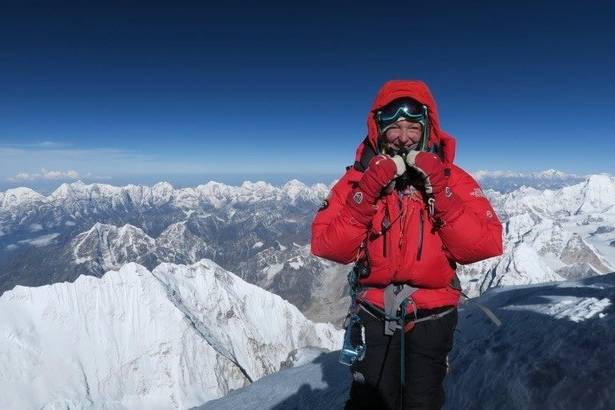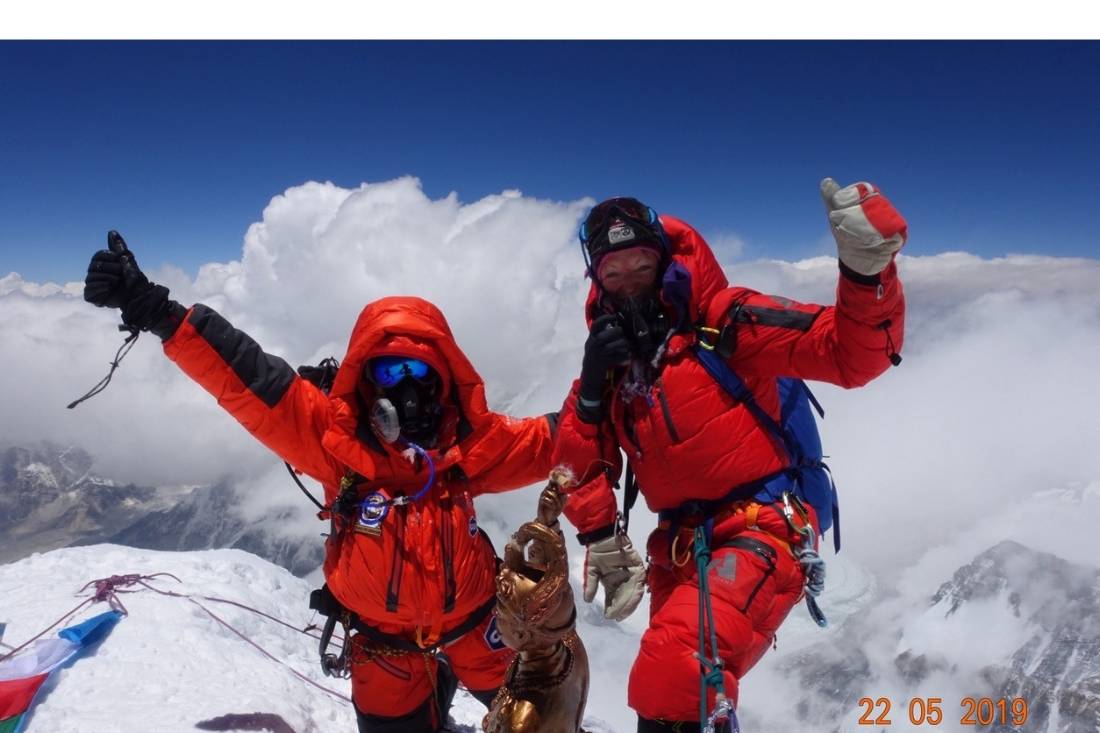What attracted you to the Zanskar range—and Kun in particular?
I’ve wanted to explore the Zanskar region for some time, for its combination of exceptional natural beauty and its thriving Buddhist culture. I was struck by the views of Nun and Kun since the first time I skied in Kashmir.
Nun and Kun are significantly higher than all the mountains surrounding them, thus, they appear a lot higher than their 7000m—and we should get truly spectacular views in every direction. I really love their shape, too. They are classically beautiful—like a children’s drawing of a mountain.
How would you describe what the climbing will be like?
There will be some slightly technical climbing lower down. We’ll be using fixed ropes lower on the mountain which makes it hugely easier, but may be climbing on quite hard ice with crampons, which can, in turn, be challenging. As we ascend, the route will become less technical (and maybe more beautiful!). Throughout, it will be interesting and varied climbing with great scenery.

What should a first timer expect at 7,000m?
I love that the summit of Kun is in the 7,000 m range, because it’s an altitude that doesn't require the money, time and resources that an 8,000 m peak does, but it’s well high enough to allow climbers to learn a lot about climbing at high altitude.
What advice do you have for overcoming altitude issues?
I know many of my clients have been surprised to learn that I can experience altitude headaches between 3,500 to 5,000 metres.
Decades of past expeditions have shown, though, that once I’ve acclimatised to that altitude, I’m okay above 6000 metres (and even better above 7000m!). I’ve worked with doctors and physiologists enough to know some of the reasons for this and I love supporting clients who haven’t been to the higher altitudes before to feel comfortable to try, and to be OK about not necessarily feeling 100 percent, all the time. Combining a slow steady ascent with working high and sleeping low, and appropriate rest periods, reduces or eliminates problems higher up.
Acclimatization, Hydration, resting, pacing, and keeping protected from the harshness of sun, wind and cold, are the simple keys to success. We have crafted our itinerary to begin with a five-day acclimatization trek through the Markha Valley due south of Leh and the Indus Valley. Importantly, this fine introduction to the rugged Trans-Himalaya landscape is also critical preparation for preparing for altitude.
How does your background as a physiotherapist influence your guiding style?
Physiotherapy is all about helping people potentiate and rehabilitate, improving their physical capabilities and performance, and this is exactly what I do as an high altitude mountain guide. My focus is on maximising a climber’s performance (both physical and mental) on an expedition to enhance their enjoyment and increase their chances of success.
I find people enjoy can be curious about my own journey of overcoming insecurity, fear and discomfort. And of course, I aim to inject some humour and ensure there’s a healthy, supportive vibe within the group as we take on this experience together.
How has your lifestyle changed over your decades of mountaineering?
As I’ve become older, I’ve refined my life, so that I put more conscious thought in things I do and have. I try to avoid noise and clutter and choose aspire to do simple things well. At home, I love having beautiful things around me in my house, so I choose art rather than clutter.
And, when I’m on an expedition, I try to encourage a focus on the craft of mountaineering and on “owning” the consequences. An example of a simple practice with consequences would be something basic like taking the inner boots out of your climbing boots and drying them in the tent in the afternoon.
In this situation, all you've got is a pair of boots and warm temperatures in the tent—and a this simple discipline can make a huge difference to your comfort and safety level on the following day’s climb—wet boots can equal frostbite, so and potentially your overall success on the expedition.

Do you have any tips for trekkers wanting to take their adventures to new levels (pardon the pun)?
I like to give people this insight: If the thought of climbing a mountain intimidates you, then look closely at what we are doing on the climb. Often we are taking tasks or activities that you have done before quite comfortablty, and simply put them in a different environment. For example, camping.
You may have seen images you’ll see of rock climbers on big cliffs hanging, sleeping. It seems impossible to most people, but what they’re doing when they’re hanging from a cliff or lying on a rock ledge is camping. If you can camp, you can bivouac, you can camp in snow, you can camp at 6000m.
You’re just moving your camping to a different place. It’s a lot easier to do new things if they are simple things that you have done many times before. You’re just doing them in a different place. Taking your trekking to the next level is about doing what you’ve always done in the outdoors—it’s about having fun, exploring, learning and creating bonds through shared experiences.
It’s all so much easier when you realise that’s what you’ve been doing with your family and friends for years. Mountaineering can be doing the same thing (hiking) in a different environment.
Which of your many achievements are you most proud?
It was always a dream to climb Everest without supplementary oxygen and, of course, I’m stoked to have achieved multiple ascents over 8000m, but, overall, I’d have to say that I am most proud of my safety record.
As my book title Going Up is Easy suggests, the challenge is in the safe return. I describe myself as elite at being safe and, to me, that’s the most important thing always.
My second most “proud-of” achievement is that of taking opportunities in my life, remaining curious, treasuring and respecting Big Nature and relishing varied experiences. Through this philosophy I have been able to lead a life less travelled.
View trips with Lydia Bradey